My Starting Kit Overview
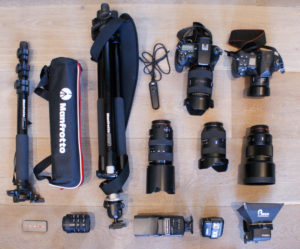
This blog is about learning the art in and of photography for 10,000 hours, it is not about equipment. That said, equipment has a baring on the quality of images produced, and some people may be interested in the fact that I’m a Sony user as this influences some other decisions, including the processing software used: Capture One. (See: “My Introduction to Capture One Pro Sony 11“.)
The Sony decision was less a decision than an emerging addiction resulting from the fact that once you buy into a brand it is difficult to change. Unless you are prepared to go through the financial upheaval of replacing all your lenses, you are stuck with what you’ve got. My first DSLR was a Sony 350 (with a cropped or APS sensor), bought, for a safari holiday, on the recommendation of a friend who knows more about the value of a shilling than he does about photography. At that time the the a350 had what was considered a whopping 14.2mp sensor and complete with a 16-70mm zoom lens was fifty quid cheaper than just the body of it’s closest rival the Nikon D80!
In 2010, I resolved to do this photography thing more seriously and bought a grown-up full-frame DSLR and choose the Sony a850, which seemed fantastically good value relative to Sony’s pro model the a900 with almost the same spec and four times the price. I also thought I would be able to share the use of lenses with my old a350, which turned out not really to be the case. At the time the a850 was a great camera, and when I eventually paired it with some good glass in the form of the Zeiss 135mm f/1.8 lens, it produced super sharp images.
In 2017, I upgraded to the semi-mirrorless a99ii, which is a tier up from the a850 and I am still learning it’s capabilities. I am still jealous of the sensors friends have in their full-frame Canons and Nikons that enable them to shoot at ISO of up to about 52,000 with almost no noise. The a99ii is still prone to noise above 1,600 (the a850 was noisy above ISO 400) but since it has 4 to 5 stops of image stabilisation built into the body it’s possible to shoot, without a tripod, at much lower speeds and therefore use a lower ISO. See below.
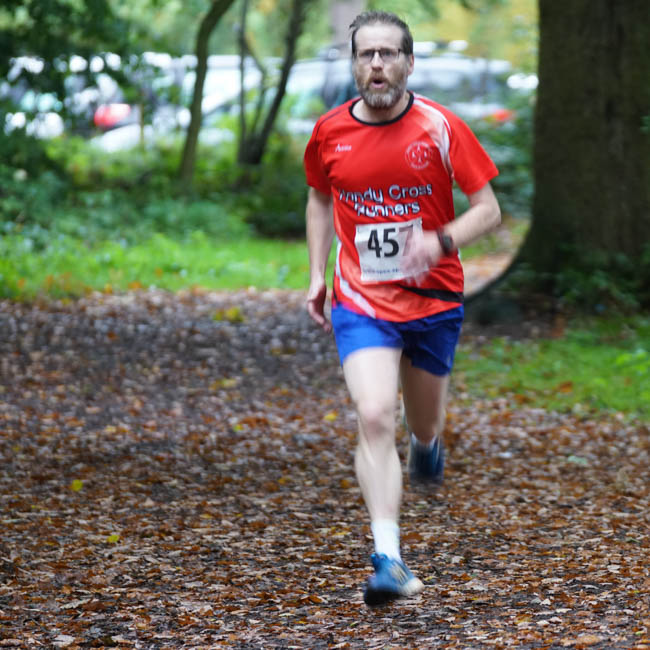
Note: movement in runner but crisp background by his feet.
My Kit in Detail
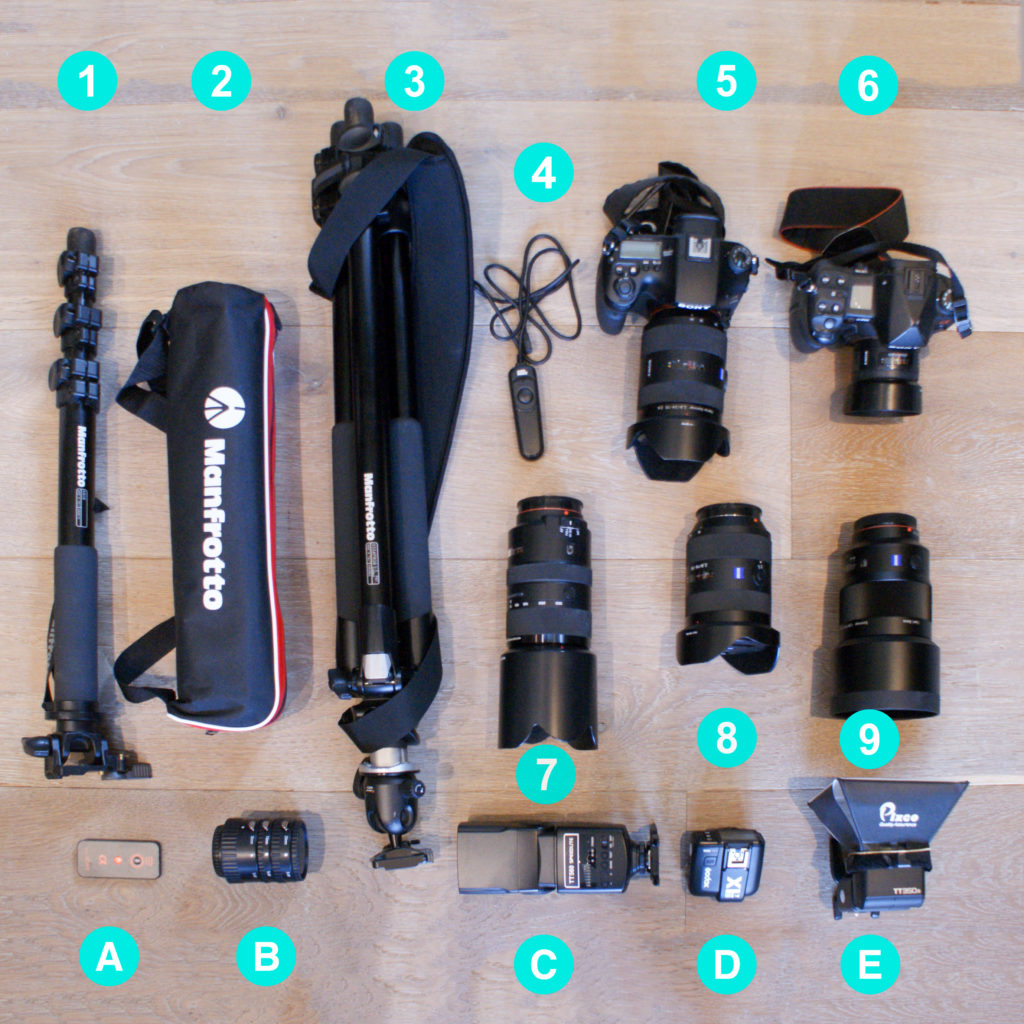
Camera Bodies
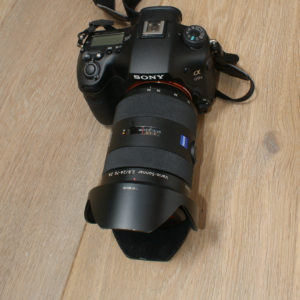
5. Sony a99ii – SLT
This is my primary camera. Full-frame 42 megapixel sensor, fast shooting (12 frames a second), and all the features of a pro-grade camera. The translucent mirror means that you are always shooting in live view mode. This took a while to get used to, but is in fact a huge advantage. In essence, the super high quality OLED viewfinder display shows you exactly what is going on the sensor, and has no perceptible lag as you move. In low-light you get to see clearly what is being photographed. Manual exposure is so much easier to use: if it looks dark through viewfinder, you need to either increase ISO, widen aperture or decrease the shutter speed. [Obviously, previous statements do not apply if using a flash!]
Currently, very happy with this camera.
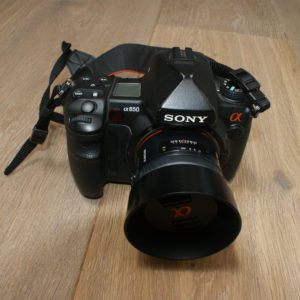
6. Sony a850 – DSLR
Now my back-up camera, this is a work-horse on which I have shot well over 40,000 frames.
By comparison with the a99ii, it feels somewhat primitive. Optical viewfinder, Sony proprietary flash-shoe, and the same memory cards as the A350, but not the A99ii. Which unfortunately means that accessories are not interchangeable between the A850 and A99ii.
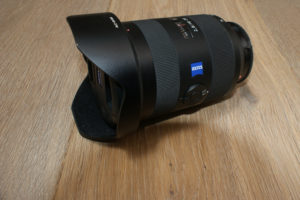
Lenses
8. Zeiss 16-35mm f/2.8
Having largely accepted my minority status as a Sony shooter, I was astounded to find, when on a 3-day train trip across South Africa with 50 or so passengers, there were 3 other Sony users, all of whom had exactly this lens.

5. Zeiss 24-70mm f/2.8
(Shown on the A99ii, where it lives a lot of the time.)
If in doubt, this is the lens I shoot with. I think it produces sharper pictures than the Sony 50mm f/1.4 prime. Although cannot get quite the narrow depth of field.
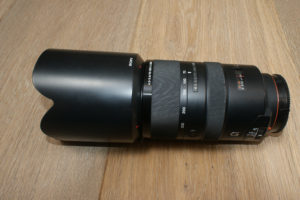
7. Sony G 70-300mm f/4.5-f/5.6
Bought second-hand in 2010 for an Africa trip that involved climbing Mount Kilimanjaro about a week after having acquired the A850.
This has been on my camera every second Saturday of odd months for the past 4 years or so, when I deputise for George Mardall as the Black Park Parkrun photographer (see my post: “Photography for Parkrun”). I take close to 1,000 shots each time I do this. This alone makes the 70-300 my most heavily used lens.
6. Sony 50mm f/1.4 Prime
(Shown on the A850)

Bought in 2010 with the A850.
The super narrow depth of field produced at f/1.4 can create dramatic shots. The obvious flip-side of this being that when wide open it is incredibly difficult to get anything in focus.
Loved it to start with, but falling out of love due to high levels of vignetting and chromatic aberration.
9. Zeiss 135mm f/1.8 Prime
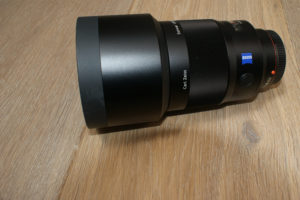
I love this lens. It was great on the A850 and is even better on the A99ii.
Wide open at f/1.8 it produces a lovely narrow depth of field with soft bokeh.
Takes a lot more effort to use than a zoom and narrow depth of field means that care needs to be taken to keep the bits that should be in focus, in focus.
When it works it is wonderful.
Support
1. Manfrotto 055xPROB – Tripod
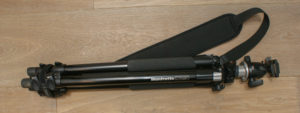
I often think this is the best purchase I have ever made.
However, it is not very portable. It is heavy and even fully retracted is too long to fit in most suitcases.
It is incredibly stable, which must be the number one priority for a Tripod, and it has the hook where you can hang your rucksack for additional ballast should this be needed.
Number two priority is flexibility: the central column can be configured upwards to a height of over 6 feet; downwards to ground level; or sideways.
2. Manfrotto beFree – Travel Tripod
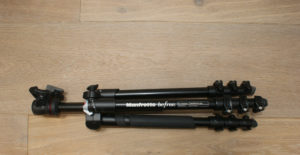
I admit that I purchased this purely because I was so impressed with the cool way it folds up on itself and the fact that I was hacked-off with the 055xPROB above not fitting in my suitcase.
It has taken me a while to learn to love the beFree as a support for my, admittedly heavy, body and lens combos. For a long time I believed its primary purpose was to make me appreciate the 055xPROB. However, the more I use it, the more I get used to it and like it.
3. Manfrotto 680B – Monopod
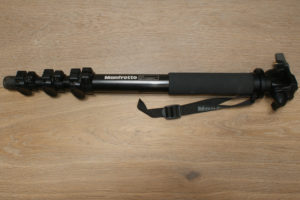
In my opinion, more photographers should use a monopod more often.
Bought in 2010 for the Africa/ Kilimanjaro trip and used extensively for Parkrun photography and other events.
One drawback is that it is about 2 inches too short for me (I’m six foot two) and even when it’s fully extended, I have to stoop; just a little, but enough to mean that this in on the list for replacement.
Lights/ Flashes
C. Newer TT560 Speedlite
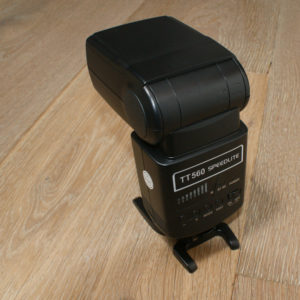
Don’t know much about speedlites.
This was cheap and bought when I discovered to my horror that my Sony HVL-F58AM flash which I had used consistently with both my A350 and A850 was not compatible with my new A99ii.
Seems to work fine.
D. Godox X1 T (S) Commander
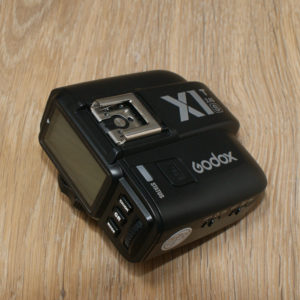
Only just started using this. Seems to do what it should.
E. Little Godox TT350S Flash with Diffuser
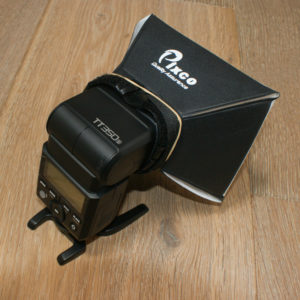
Little fill-in flash. For the little I have used it so far, seem to work OK.
The diffuser (yes, actually held on with an elastic band) seems to soften the light nicely.
Assessories
4. Cable Release
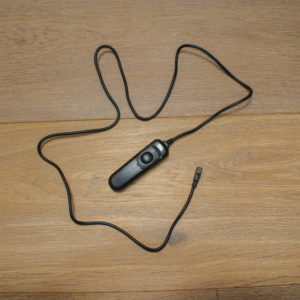
Personal mantra: “leaving home with a tripod. Do I have:
- spare battery
2. Lens cloth
3. cable release?”
This is so much better than either using the 10 second delay on the camera or the remote controller.
A. Remote Shutter Release
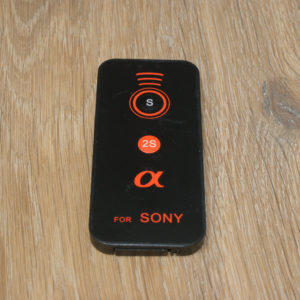
Astonishingly cheap and to my surprise, works flawlessly.
Only thing is, you have to set the camera to remote operation, and I just prefer the physicality of the wire in he cable release.
That said for £3.50 including battery and postage and packing, you can’t go wrong!
B. Extension Tubes
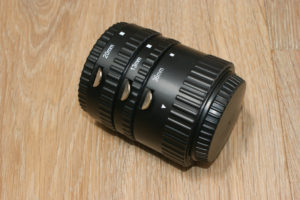
These simply put a gap between camera body and lens, whilst relaying the electrics for some degree of automatic operation.
Auto-focus no longer works, but for macro work this isn’t really a problem.
Have only really experimented with these. They are very simple, but seem to work.
Stuff not shown, i.e., stuff used to take the pictures of “my kit”: very old Sony A350, Sony HVL-F58AM flash, mounted on a Manfrotto Nano stand with a white umbrella, triggered wirelessly using the built-in flash on the s350.
Other shots of me, shown on this site, have generally been taken on my iPhone 6.
Updates:
12 January 2018: Godox TT685s
Bigger version of my TT350S above (E)
27 February 2018: Grey cards
Not used all that much, to be honest. May be useful in a studio setting but see my experiments in a woodland environment.
18 March 2018 – Photography Show at the NEC
- Benro MAD49C carbon fibre monopod – no problem with the max height of this one; would suit someone 7 foot tall; and super light.
- MacWet sports gloves (note to self: size 8 1/2) – reasonably warm yet great feel
- Phot-R four section tripod – which I didn’t really need but was such fantastically good value for money, I couldn’t resist. Heavier that the Manfrotto beFree (2) above yet small enough to get in a suitcase. Loads of features including a Manfrotto compatible quick release, monopod conversion, and bags & straps included. Used on holiday to Andalucia, Spain – love it. … and all for less than £60.
15 June 2018: Pluto Trigger
This looks like a great bit of kit. It uses an iPhone as a controller for wide variety of time-lapse and related functions. Also has:
- Laser trigger
- Sound
- Lightning.
27 June 2018: LEE Filter Starter Set
DSLR Starter Set +
- 77mm Standard Converter Ring
- 77mm Wide Angle Converter Ring
- 100mm Big Stopper.
28 August 2018: Godox AD600BM + Andoer 7 inch lamp shade
600w a guide number of 87 (which is apparently quite a lot) and super fast refresh times. Looking forward to using this.
16 April 2019: Sony SAL10028M 100mm Macro Lens + Godox ML-150 Ring Flash
Fabulous macro lens and ring flash combo. Bought and used initially for the Macro Photography Workshop at Kew Gardens on 17th April. Sharp, low chromatic aberration in high contrast situations, but seems quite slow in auto-focus mode and has a tendency to “hunt” when used as a general purpose lens.
Godox ring flash, simple to use and does the job.
20 April 2019: Wacom Tablet
October 2019: Godox V1(S) Flash and Rogue FlashBender Large Reflector 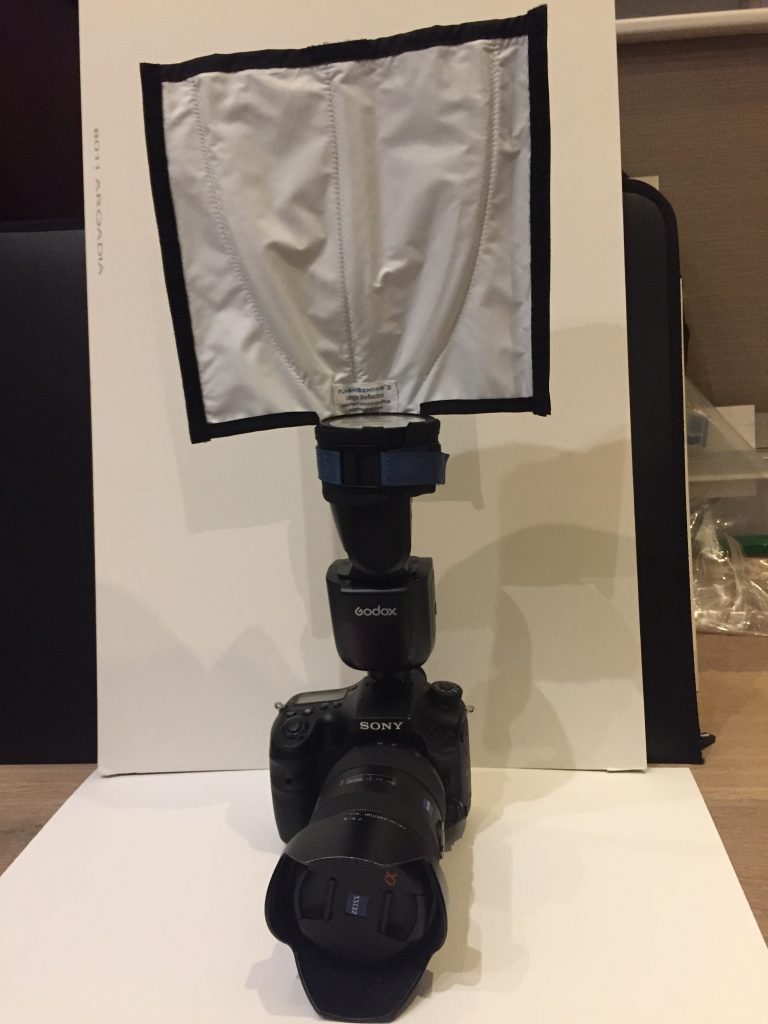
Purchased for the shoot with Princess Alexandra (See “Shooting Royalty“) originally scheduled for 5th November but ultimately shot on the 20th February 2020 when this flash and modifier combo played a major role.
Useful tutorial/ reminder video: “Basic Functions of the Godox V1 Flash“.
29 March 2020: Black/ White Background
Bought initially to shoot black dog against black background. The black in my reflector set was just too shiny. This one is great – perfect for portraits.
30 April 2020: Manfrotto MTPIXIEVO-BT Table-top Tripod + ZCTL Quick Release Plate.
Quick release plate had to be returned as it just didn’t fit.
1 July 2020: Godox 30 x 120 cm Grid Softbox
Purchased for the Karl Taylor “Working to a Brief” challenge #2 to achieve a gradient light on a wine bottle.
7 July 2020: Godox AK-R1 Accessory Kit for V1 Flash
8 July 2020: YoLife Food Styling Tweezers
Bought for a potential restaurant project.
9 July 2020: Wimberley Plamp II PP-200
As recommended by Polina Plotnikova on 11th May.